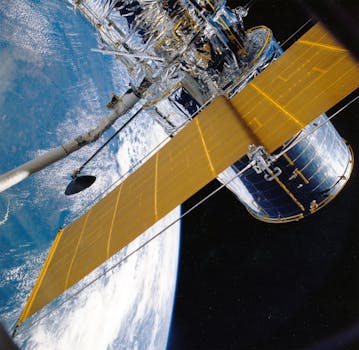
Satellite Telecommunications Innovations have been transforming the world of communication and information exchange. The recent advancements in this field have opened up new avenues for global connectivity, enabling people to stay connected and access information from anywhere in the world. In this article, we will delve into the latest innovations in satellite telecommunications and their impact on the industry.
The advent of satellite telecommunications has enabled the transmission of data, voice, and video signals over long distances, connecting even the most remote areas of the world. The latest innovations in this field have focused on improving the speed, capacity, and reliability of satellite communications. One of the significant advancements in recent years is the development of high-throughput satellites (HTS), which offer faster data speeds and greater capacity than traditional satellites.
HTS have revolutionized the satellite telecommunications industry by providing faster and more reliable connectivity. These satellites use advanced technologies such as spot beams and frequency reuse to increase their capacity and reduce interference. As a result, HTS have enabled the widespread adoption of satellite broadband services, providing internet access to millions of people around the world.
Another significant innovation in satellite telecommunications is the development of low-earth orbit (LEO) satellites. LEO satellites are designed to operate at lower altitudes than traditional satellites, which reduces latency and improves the overall performance of satellite communications. LEO satellites are being used for a variety of applications, including satellite broadband, Earth observation, and navigation.
In addition to these technological advancements, there have been significant innovations in the business models and services offered by satellite telecommunications companies. Many companies are now offering flat-rate pricing and unlimited data plans, making satellite broadband services more affordable and accessible to a wider range of customers. There are also new services being offered, such as in-flight connectivity and maritime broadband, which are enabling people to stay connected while on the move.
The impact of these innovations on the satellite telecommunications industry has been significant. The industry has experienced rapid growth in recent years, with the global satellite market expected to reach $7.5 billion by 2025. The growth of the industry has also created new opportunities for companies and investors, with many new players entering the market and existing companies expanding their services and capabilities.
However, despite these advancements, there are still challenges facing the satellite telecommunications industry. One of the significant challenges is the issue of latency, which can affect the performance of satellite communications. Latency occurs when there is a delay in the transmission of data, which can be frustrating for users and affect the overall quality of service. To address this issue, companies are investing in new technologies and infrastructure, such as LEO satellites and advanced modulation techniques, to reduce latency and improve the performance of satellite communications.
Another challenge facing the industry is the issue of regulation and policy. The satellite telecommunications industry is subject to a range of regulations and policies, which can vary by country and region. Companies must navigate these complex regulatory frameworks to operate and provide services, which can be time-consuming and costly. To address this issue, companies are working with governments and regulatory bodies to develop more streamlined and effective regulatory frameworks, which will enable the industry to grow and innovate more quickly.
In conclusion, the recent innovations in satellite telecommunications have transformed the industry and enabled the widespread adoption of satellite broadband services. The development of HTS and LEO satellites has improved the speed, capacity, and reliability of satellite communications, while new business models and services have made satellite broadband more affordable and accessible. As the industry continues to grow and evolve, it is likely that we will see even more innovative technologies and services, which will further transform the way we communicate and access information.

